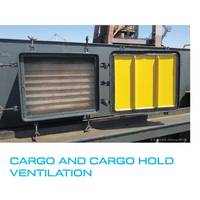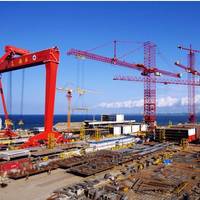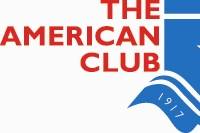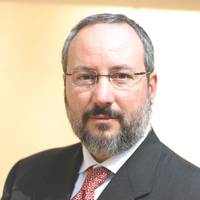Ports of Indiana Invests to Expand Following 6% Cargo Growth in 2022

Ports of Indiana announced more than $20 million in expansion and maintenance projects have been approved following several years of cargo growth.Ports of Indiana, which includes Jeffersonville, Burns Harbor and Mount Vernon, handled 11.9 million tons of cargo in 2022, resulting in a 6% increase from 2021 and 42% more than 2020. During 2022, the Burns Harbor and Jeffersonville ports both set new records for total annual shipments, and the overall cargo volume was the fourth highest…
New Guidance Issues on Bulk Carrier Ventilation

Proper ventilation is essential to preventing damage to the cargo and to ensure the safety of the crew and vessel in bulk carriers. To provide ship’s masters and crew with an understanding of different ventilation requirements for bulk cargoes, INTERCARGO, The Standard Club and DNV GL, the world’s leading classification society, have launched a new ventilation guide.The guide covers the main aspects on how and when to ventilate to control of humidity and to remove flammable and toxic gases released from cargoes.
Oldendorff Revives Newbuild Contracts at Samjin

Last month saw the resurrection of two newbuilding contracts, which Oldendorff had concluded originally in June 2012 with Weihai-based Samjin Shipbuilding Ind. Co Ltd (SSI), at the time controlled by Korean shareholders. The initial order was for four 36,000 dwt Handysize newbuildings of the Korean designed FESDEC-36k eco type. The yard went through financial restructuring due to the problems of its Korean parent, leading Oldendorff to cancel all four ships and recollect its down payments in 2014 and 2015 after excessive delays.
POSCO Production at Indiana Ports to start in 2017
Officials from POSCO, the Ports of Indiana and community leaders gathered to break ground today on POSCO's new wire rod processing center at the Port of Indiana-Jeffersonville. POSCO is a multinational company headquartered in Pohang, South Korea, and the fifth-largest steel producer in the world. The new $19 million facility is expected to begin operations in 2017 and create up to 60 high-wage jobs by 2018. POSCO is South Korea's fourth largest company, behind Samsung Electronics, SK Holdings and Hyundai Motors, and is ranked No. 162 in Fortune's Global 500. "When a global company like POSCO selects Indiana for its newest plant, it is a strong endorsement of our state's pro-business environment and talented workforce," said Governor Mike Pence.
POSCO Plans Port Plant at Indiana-Jeffersonville
POSCO, a multinational company headquartered in Pohang, South Korea, and the fifth-largest steel producer in the world, has announced plans to build a wire rod processing center at the Port of Indiana-Jeffersonville, creating up to 60 high-wage jobs by 2018. POSCO is South Korea's fourth largest company, behind Samsung Electronics, SK Holdings and Hyundai Motors, and is ranked No. 162 in Fortune's Global 500. "Although we are located on different continents, South Korea and Indiana both share a reputation of excellence when it comes to advanced manufacturing," said Governor Mike Pence. "Having a globally-focused company like POSCO select Indiana to grow its business is a strong endorsement of our state's low-cost…
Baltic Mercur II makes maiden voyage to Antwerp
This week Atlantic Ro-Ro Carriers (ARRC) celebrates the maiden voyage of the Baltic Mercur II via the port of Antwerp as part of their regular transatlantic service to the US Gulf. After long deliberation and extensive analysis, the company has chosen to anchor the European extension of ARRC’s multipurpose service in Antwerp. ARRC has been operating as the only direct transatlantic MPP carrier between St Petersburg Russia and the USA for the past 20 years. With a mixed fleet of LORO and LOLO vessels the company is responsible for moving almost half a million tons of ferrous and non ferrous metals, thousands of units of specialized equipment for the oilwell…
Jeffersonville Port Sets Quarterly Shipping Record
The Port of Indiana-Jeffersonville recorded the highest quarterly shipments in its 30-year history during the first quarter of 2015. Cargo volume exceeded 800,000 tons, up 10 percent from the previous record set in the first quarter of 2014. First quarter volumes of grain remained steady while steel cargoes more than doubled and fertilizer shipments were up nearly 30 percent from the record year-ago quarter, including a 70 percent increase in potash used in fertilizers. "The strong start to 2015 is testimony to this port's connection to international markets and the diverse portfolio of companies which are leaders in their respective business categories," said Port Director Scott Stewart.
Big Increase in Port of Houston Steel Cargoes
More steel moved across the docks in July than any month since 2008, Executive Director Roger Guenther reported at the recent meeting of the Port Commission of the Port of Houston Authority. Guenther also noted that PHA has achieved a record, with operating revenues in July 2014 of more than $24 million. Steel and bulk cargo support a solid 5 percent growth in tonnage, he said. More than 22 million tons of cargo moved across Port Authority docks during the first seven months. the highest tonnage in steel since 2008, 844,000 tons. Container volume was relatively flat compared to last year, but has seen a 4-percent increase in the number of loaded boxes year to date.
American Club Issues Steel Cargo Warning

The American P&I Club has updated its advice to members on the handling of steel cargoes. It has done so in consequence of some recent cases where the absence of pre-loading surveys increased the cost of steel cargo claims on discharge. It first raised the problem in a March 2002 circular, making extensive recommendations so as to minimise the prospect of spurious steel cargo claims. In a new circular, Shipowners Claims Bureau, Inc. (the managers) state that since then members have for the most part followed the guidance and made progress in minimising and averting the risks…
Strong & Steady Start for Seaway

Positive Outlook as St. Lawrence Seaway Opens the 2012 Season. The steel and construction industries pushed the demand for North American commodities such as iron ore, stone and cement, and provided the 2012 shipping season with a solid start. The St. Lawrence Seaway reported that year-to-date total cargo shipments for the period March 22 to April 30 were 4.4 million metric tons, up 2.24 percent over the same period in 2011. “Coal shipments, the Seaway’s second largest commodity by tonnage for more than a decade…
Indiana Port Tonnage at Five Year High
The Ports of Indiana handled 8.1 million tons of cargo in 2011, the largest annual tonnage since 2006. New ethanol and dried distillers grains (DDGs) shipments combined with gains in limestone, salt and steel cargoes fueled a 5 percent increase in total shipments moving through Indiana's three ports. "Despite continued economic uncertainties, this was the fourth consecutive year our ports experienced growth," said Ports of Indiana CEO Rich Cooper. "Our 2011 shipments were nearly a million tons higher than the five year average. We've also seen a significant increase in capital investments by our port companies as they prepare for future growth. The Port of Indiana-Mount Vernon handled its largest annual tonnage since 1994 and the third highest in the port's 36-year history.
Q&A: ShipDecision's Al Carbone

Maritime Reporter & Engineering News recently caught up with Al Carbone, creator of ShipDecision, a shipmanagement tool designed to help operators save time and money. Can you share with us some background information? Carbone As a youth I always had a fascination with math, science and technology, so it was no surprise to my friends that I ended up studying engineering. I earned my Bachelor of Engineering degree - in Electrical Engineering - in 1981 from Concordia University in Montreal.
Maritime Exchange Urges Bush to Repeal Tariffs on Steel Imports
The Maritime Exchange for the Delaware River and Bay, in a coordinated effort with business leaders and local longshore unions, today called on President Bush to repeal the Section 201 tariffs imposed on steel imports in March of last year. This action was taken following the release of the International Trade Commission (ITC) report on the effects of the steel tariffs on domestic steel-consuming industries and domestic steel producers. In a letter to President Bush, Maritime Exchange President Dennis Rochford, cited the adverse economic impact these tariffs have had on the tri-state regional port complex. "Steel ship arrivals will drop from 210 last year to 150 by the end of this year.
Indiana Ports Record High Tonnage Month
More cargo moved across the docks at the Ports of Indiana in September than any other month in the last three years. This follows eight months of strong shipping, which put the Hoosier port system 31% ahead of last year through August. After nearly 700,000 tons of cargo were handled in September, Ports of Indiana shipping is now up 36 percent versus the first three quarters of 2003. The ports have only moved more than 700,000 tons in a month twice since 1998. September was also a landmark month as the Ports of Indiana handled the 150-millionth ton in the statewide port authority's 30-plus year history. Indiana has three public ports which opened on Lake Michigan in 1970 at Burns Harbor, and on the Ohio River in 1976 at Mount Vernon and 1985 at Jeffersonville.
Rickmers Hamburg Christened in Hamburg
Rickmers Hamburg, the first of the new Rickmers-Linie Superflex Heavy multi-purpose container carrier (MPC) vessels to be delivered, was officially named in Hamburg on December 9. wife of Hamburg's minister of economic affairs, Gunnar Uldall, christened the vessel to much celebration. The pastor of St Jacobi Church in Hamburg, Lutz Mohaupt, blessed the crew and vessel. Leading the celebrations was Bertram R C Rickmers, the owner of Rickmers-Linie, with guests in attendance included Gunnar Uldall as well as numerous customers and business partners from across Germany and abroad. Rickmers Hamburg's maiden voyage took her from Shanghai via Masan (South Korea) and Hitachi (Japan) to the East Coast of North America.




